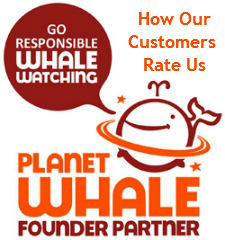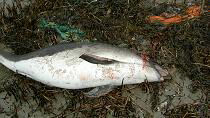Porpoises |
|
The numbers of porpoises in many parts of the world have declined dramatically due to entanglement in bottom set gill nets and tangle nets. Frequenting inshore waters brings them into contact with people and the adverse effects of modern fishing methods, chemical and noise pollution and coastal development which combine to create the greatest threat to the continued survival of these small cetaceans and is bringing some members close to the risk of extinction. Porpoises FactsThe three established genera within the family Phocoenidae comprise Phocoena, Neophocaena and Phocoenoides. The genus Phocoena contains four species, which contains the Harbour Porpoise that is most commonly seen on our whale and dolphin watching tours. The Vaquita is a small porpoise restricted in range to the Gulf of California and considered to be critically endangered. Burmeister's Porpoise and the Spectacled Porpoise are also restricted in their range and as a result under threat. Dall's Porpoise (genus Phocoenoides) is readily distinguished from other porpoises and other smaller cetaceans by its distinct body shape, a thick, robust body, small head with no beak and keeled tailstock. Lastly, in the genus Neophocaena is the Finless Porpoise whose numbers have been severely depleted due to incidental capture in static fishing gear. The Harbour Porpoise, one of the world's smallest cetaceans (1.5 metres) inhabits coastal temperate and sub arctic waters up to a depth of 150 - 200 metres and may only be found in the northern hemisphere. The females are larger than the males reaching sexual maturity between three and five years of age. Females are thought to have a calf once a year and may live as long as 15 years.
Read more about:
Return to TopOur Dolphin & Whale Watching Tours
|
Click on images for larger view:
|
Whale WatchingWhale Watching in IrelandWhale Watching TripsWhale Watching HolidaysDolphin WatchingDolphin EncountersDolphin HolidaysOther Marine Wildlife Tours |
More About WhalesWhale ConservationWhale PicturesMore About DolphinsDolphin PicturesPorpoisesSealsAbout
|














